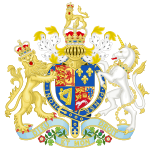Parliament of Great Britain
All of the traditions, procedures, and standing orders of the English parliament were retained, although there is no provision for this within the treaty; furthermore, the incumbent officers and members representing England comprised the overwhelming majority of the new body.
[citation needed] After the Hanoverian King George I ascended the British throne in 1714 through the Act of Settlement of 1701, real power continued to shift away from the monarchy.
By the end of the 18th century the monarch still had considerable influence over Parliament, which was dominated by the English aristocracy, by means of patronage, but had ceased to exert direct power: for instance, the last occasion on which royal assent was withheld was in 1708 by Queen Anne, even this being done only at the request of her ministers.
[4] At general elections the vote was restricted to freeholders and landowners, in constituencies that had changed little since the Middle Ages, so that in many "rotten" and "pocket" boroughs seats could be bought, while major cities remained unrepresented, except by the Knights of the Shire representing whole counties.
At general elections the vote was restricted in most places to property owners, in constituencies which were out of date and did not reflect the growing importance of manufacturing towns or shifts of population, so that in the rotten and pocket boroughs seats in parliament could be bought from the rich landowners who controlled them, while major cities remained unrepresented.
In 1780, a draft programme of reform was drawn up by Charles James Fox and Thomas Brand Hollis and put forward by a sub-committee of the electors of Westminster.




